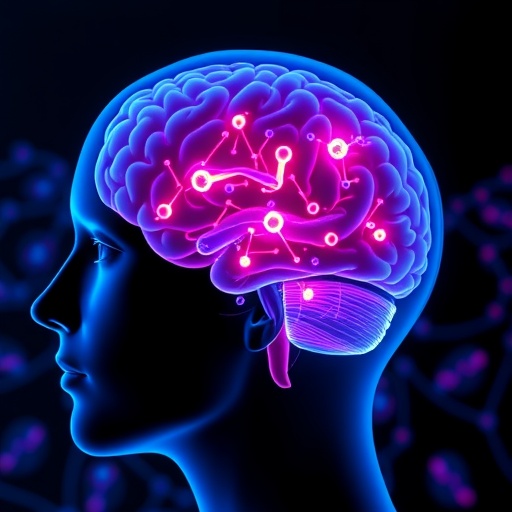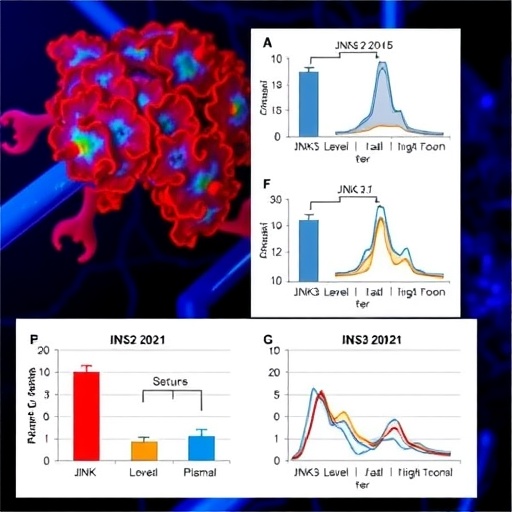
Emerging Insights into Lipid Dysregulation Illuminate Mechanisms Underlying L-DOPA-Induced Dyskinesia in Parkinson’s Disease
Parkinson’s disease (PD) continues to challenge neuroscientists and clinicians alike, with its complex pathology and the often problematic side effects of standard treatment protocols. At the forefront of therapeutic strategies lies L-DOPA, a dopamine precursor that remains the most effective symptomatic treatment for motor deficits. Yet, prolonged L-DOPA therapy frequently culminates in the development of L-DOPA-induced dyskinesia (LID), involuntary, erratic movements that severely impair patients’ quality of life. Until recently, the molecular underpinnings of LID have eluded complete understanding, leaving a gap in designing more targeted interventions to alleviate this debilitating condition. In a groundbreaking study published in npj Parkinson’s Disease, Kaya, Vallianatou, Nilsson, and colleagues unravel a novel layer of pathology linked to brain-region-specific lipid dysregulation in a primate model of PD subjected to chronic L-DOPA treatment.
The study meticulously delineates lipidomic alterations across distinct brain regions implicated in PD and LID, highlighting how disruptions in lipid metabolism could be central to the pathophysiology of dyskinesia. Lipids, long overshadowed by proteins and neurotransmitters in neurodegeneration research, are increasingly recognized as vital regulators of membrane structure, signal transduction, and synaptic plasticity. The research team leverages this perspective, employing high-resolution mass spectrometry to perform an unprecedented lipidomic profiling of the striatum, motor cortex, and cerebellum in L-DOPA-treated primates exhibiting dyskinetic symptoms.
.adsslot_dx0DWSwGCM{width:728px !important;height:90px !important;}
@media(max-width:1199px){ .adsslot_dx0DWSwGCM{width:468px !important;height:60px !important;}
}
@media(max-width:767px){ .adsslot_dx0DWSwGCM{width:320px !important;height:50px !important;}
}
ADVERTISEMENT
Their multi-faceted approach reveals that LID is associated with pronounced alterations in specific lipid classes, notably sphingolipids, glycerophospholipids, and cholesterol derivatives, with variations not uniformly distributed but instead distinctly localized to individual brain regions. This spatial specificity suggests that lipid dysregulation may contribute to the synaptic and neuronal dysfunctions observed in these areas, which are critical nodes within the motor control circuitry. Such findings realign the focus of PD research toward metabolic and structural membrane components as pivotal elements in disease progression and treatment side effects.
In the striatum, a key region affected by PD pathology and central to the manifestation of LID, the investigators detect elevated levels of ceramides and altered sphingomyelin species. Ceramides, bioactive lipids known for their roles in apoptosis and inflammatory signaling, could drive neuronal stress and exacerbate maladaptive plasticity linked to dyskinesia. These lipids have been implicated previously in neurodegenerative conditions but are now positioned as potential modulators of motor complications in PD specifically induced by dopamine replacement regimes.
Conversely, the motor cortex reveals distinct lipid perturbations characterized by disrupted phosphatidylcholine and phosphatidylethanolamine pools. These glycerophospholipids are fundamental components of synaptic membranes and vesicular trafficking machinery. Their dysregulation may undermine neurotransmitter release efficiency and receptor localization, thereby contributing to the aberrant cortical excitability patterns documented in dyskinesia. Coupled with electrophysiological evidence from parallel studies, this lipidomic data underscores a link between membrane composition and cortical hyperactivity that manifests clinically as involuntary movements.
The cerebellum, traditionally considered a stabilizing influence on motor coordination, shows a contrasting lipidomic signature dominated by cholesterol ester imbalances. Changes in cholesterol homeostasis affect membrane fluidity and receptor function and may disrupt Purkinje cell signaling, further compromising motor control networks. Given the integrative role of the cerebellum in refining motor commands, these findings implicate lipid-mediated modulation of cerebellar circuitry as a contributory factor in LID pathogenesis.
Beyond describing lipid class fluctuations, the research explores how these molecular changes interface with enzymatic pathways governing lipid metabolism. Evidence points toward dysregulated activity of sphingomyelinases and phospholipases, enzymes critical for lipid turnover and signal generation. Aberrant lipid enzymology could create a feedback loop amplifying oxidative stress and inflammatory cascades, phenomena well-documented in PD but now mechanistically linked to lipid disturbances.
Importantly, these insights emerge from a primate model with salient translational relevance, circumventing some limitations of rodent studies. The use of non-human primates recapitulates the complexity of human basal ganglia circuits and L-DOPA response profiles, thus bolstering confidence in the applicability of findings to clinical scenarios. This methodological robustness opens avenues for precisely targeted therapeutic interventions aiming to recalibrate lipid metabolism in dyskinetic patients.
The implications for drug development are profound. Modulation of lipid enzymes or restoration of lipid homeostasis presents as a promising strategy to mitigate LID without compromising the antiparkinsonian benefits of L-DOPA. Pharmacological agents capable of selectively normalizing ceramide or glycerophospholipid levels are conceivable, and repurposing existing lipid-targeting compounds used in metabolic disorders could accelerate clinical translation. Moreover, lipid biomarkers identified in cerebrospinal fluid or imaging modalities may yield diagnostic tools to stratify patients by LID risk or monitor therapeutic response.
This study also invigorates the field of neurodegeneration with the notion that lipidomics should be integrated systematically alongside proteomics and transcriptomics to achieve a holistic molecular understanding. The brain’s lipid landscape is dynamic and tightly regulated, intersecting with genetics, environment, and pharmacology. As such, lipid dysregulation is unlikely to be an epiphenomenon but rather a driver of pathological states, warranting heightened scrutiny.
While the current research establishes foundational knowledge about lipid alterations in LID, several questions beckon. How do these lipid changes temporally correlate with the onset and progression of dyskinesia symptoms? Are there genetic predispositions affecting lipid metabolism that modify an individual’s susceptibility to LID? What is the interplay between lipid dysregulation and neuroinflammation or mitochondrial dysfunction? Addressing these gaps will refine understanding and enhance the precision of future therapeutic designs.
Given the complexity of lipid biology, advances in analytical technologies, including enhanced mass spectrometry resolution and spatially resolved lipid imaging, will be instrumental. These tools can illuminate how lipid microdomains within synapses and glial interactions evolve in pathological states. Furthermore, integrating computational modeling with experimental data may predict how modulating one lipid pathway impacts broader neuronal networks.
The transformative potential of this research extends beyond Parkinson’s disease, as lipid dysregulation is a recurring theme in diverse neurodegenerative conditions such as Alzheimer’s, multiple sclerosis, and Huntington’s disease. Conceptual frameworks established here regarding regional lipid changes and their functional consequences might offer a template for studying movement disorders in general.
In conclusion, the work spearheaded by Kaya and colleagues marks a pivotal advance in deciphering the molecular undercurrents of L-DOPA-induced dyskinesia. Their elucidation of brain-region-specific lipid perturbations opens fresh investigative corridors and therapeutic opportunities for a condition that imposes significant burdens on patients. As neuroscience pivots toward metabolic and lipid-centric paradigms, this study heralds a shift likely to redefine treatment approaches and improve life quality for those navigating the complexities of Parkinson’s disease.
Subject of Research: Brain-region-specific lipid dysregulation in L-DOPA-induced dyskinesia within a primate model of Parkinson’s disease.
Article Title: Brain-region-specific lipid dysregulation in L-DOPA-induced dyskinesia in a primate model of Parkinson’s disease.
Article References:
Kaya, I., Vallianatou, T., Nilsson, A. et al. Brain-region-specific lipid dysregulation in L-DOPA-induced dyskinesia in a primate model of Parkinson’s disease. npj Parkinsons Dis. 11, 258 (2025). https://doi.org/10.1038/s41531-025-01109-6
Image Credits: AI Generated
Tags: chronic L-DOPA treatment side effectsinvoluntary movements in Parkinson’s patientsL-DOPA-induced dyskinesia mechanismslipid dysregulation in Parkinson’s diseaselipid metabolism in neurodegenerationlipidomic alterations in brain regionsmembrane structure and signal transductionneurodegeneration research focus on lipidspathophysiology of dyskinesiaprimate model of Parkinson’s researchtargeted interventions for dyskinesia relieftherapeutic strategies for motor deficits





